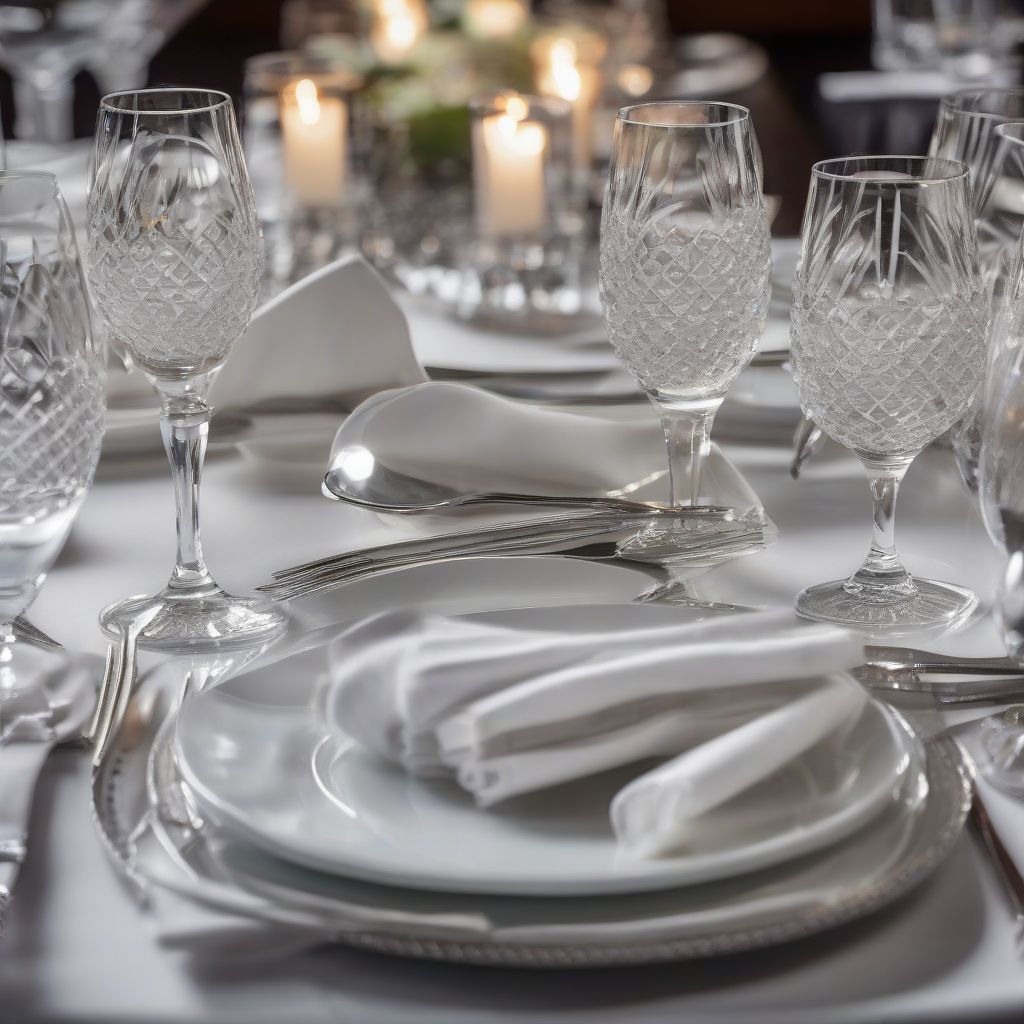Imagine this: you’re seated at a beautifully set table, soft music playing in the background, a tantalizing aroma wafting from the kitchen. It’s your first experience with fine dining, and while exciting, it’s also a little intimidating. You want to savor every moment, but the array of silverware and unspoken rules has you feeling a tad out of your depth.
Don’t worry, you’re not alone! Fine dining etiquette can feel like a secret language, but it doesn’t have to be a source of anxiety. Think of it as a way to enhance your enjoyment, allowing you to fully appreciate the artistry of the food, the ambiance, and the company.
This comprehensive guide will demystify the world of fine dining etiquette, empowering you to navigate a sophisticated culinary experience with grace and confidence.
Decoding the Dress Code: Dressing for the Occasion
The first step to conquering fine dining etiquette begins before you even arrive at the restaurant: the dress code. While specific requirements vary depending on the establishment, adhering to the dress code demonstrates respect for the restaurant and your fellow diners.
Here’s a quick breakdown of common dress codes:
- Casual: Don’t mistake this for your everyday attire. Think neat and presentable – a nice pair of jeans or slacks with a collared shirt or blouse.
- Business Casual: Step it up a notch with tailored pants or a skirt, a button-down shirt or blouse, and a blazer (optional). Avoid sneakers and overly casual footwear.
- Formal or Black Tie Optional: This dress code calls for a more polished look. Opt for a cocktail dress, a floor-length gown (optional), or a suit for men.
- Black Tie: The most formal of dress codes, black tie requires a tuxedo for men and a floor-length gown for women.
Remember, when in doubt, it’s always best to err on the side of being overdressed rather than underdressed.
The Art of the Table: Navigating Silverware and Settings
One of the most intimidating aspects of fine dining is often the seemingly endless array of silverware. Fear not, there’s a simple logic to it!
- Work from the outside in: Utensils are placed in the order they’ll be used. Start with the silverware farthest from your plate and work your way in with each course.
- Forks: Forks are typically placed on the left. The salad fork is on the outermost left, followed by the dinner fork. Dessert forks are often brought out with the dessert course.
- Knives: Knives are positioned on the right, with the blades facing inward. The dinner knife is closest to the plate, followed by the fish knife (if applicable), and then the soup spoon.
- Glasses: Your water glass will be on your right, above the knives. Wine glasses (if ordered) will be to the right of the water glass.
Expert Tip: Unsure which glass is yours? Remember “BMW” – Bread (left), Meal (center), Water (right).
 Fine Dining Table Setting
Fine Dining Table Setting
Mindful Consumption: Ordering and Enjoying Each Course
Fine dining is about savoring the experience, not rushing through it. Here’s how to approach each course:
- Ordering: Don’t hesitate to ask your server for recommendations or explanations of unfamiliar dishes. It’s perfectly acceptable, even encouraged, to inquire about ingredients, preparation methods, and flavor profiles.
- Appetizers: These smaller dishes are meant to stimulate your palate. Engage with the flavors and textures, appreciating the chef’s creativity.
- Soup and Salad: Enjoy your soup by spooning it away from you. When you reach the bottom of the bowl, it’s acceptable to slightly tilt it away from you to scoop up the last few bites. For salads, use your salad fork and knife, or if the pieces are bite-sized, your dinner fork will suffice.
- Main Course: Pace yourself! Savor each bite and allow the flavors to linger on your palate. Take small sips of wine between bites to cleanse your palate and enhance the dining experience.
- Dessert: A sweet finale to your meal, dessert is meant to be enjoyed slowly. Take your time and savor the flavors.
The Unspoken Rules: Navigating the Nuances of Fine Dining
Beyond the tangible aspects of silverware and settings, fine dining also encompasses a set of unspoken rules and etiquette guidelines.
- Phone Etiquette: Keep your phone silenced and out of sight. Fine dining is an opportunity to disconnect from technology and engage in meaningful conversation.
- Conversation: Engage in pleasant and engaging conversation with your dining companions. Avoid controversial topics and maintain a respectful volume.
- Handling Utensils: When you pause during a course, rest your fork and knife on your plate in a “V” shape with the tips touching. This signals to the server that you’re not finished. When you’re finished, place your fork and knife side by side diagonally across your plate.
- Bread and Butter: Break your bread into bite-sized pieces and butter each piece individually, rather than buttering the entire roll at once.
- Wine Service: If you’re unsure about wine pairings, don’t hesitate to ask the sommelier (wine steward) for recommendations. When your wine is poured, it’s polite to acknowledge the server with a subtle nod or a quiet “thank you.”
Concluding Your Culinary Journey: Exiting with Grace
As your dining experience draws to a close, follow these final etiquette tips for a graceful exit:
- Signal for the Check: Don’t feel rushed to leave, but when you’re ready for the check, discreetly make eye contact with your server or raise your hand slightly to signal them.
- Gratuity: Tipping is customary in fine dining establishments. A standard tip is 15-20% of the bill before tax.
- Expressing Gratitude: Thank your server for their service and the chef (if possible) for the delicious meal.
[amazon bestseller=”dining etiquette”]
Elevating the Everyday: Bringing Fine Dining Etiquette Home
Mastering fine dining etiquette is not just about navigating a fancy restaurant; it’s about embracing a mindset of appreciation, respect, and enjoyment. It’s about being present in the moment, savoring the flavors, and appreciating the art of a beautifully prepared meal. And while it might feel intimidating at first, remember that etiquette is ultimately about making everyone feel comfortable and respected.
So, embrace the opportunity to elevate your next dining experience, whether you’re at a Michelin-star restaurant or enjoying a special meal at home with loved ones. Remember, the true beauty of fine dining lies not just in the food, but in the shared experience and the memories you create. Now, go forth and dine with confidence!
